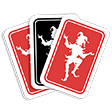In the world of classic electronic games, Simon stands as an iconic memory and reflex challenge. Introduced in the late 1970s, Simon has captivated players with its simple yet engaging gameplay. The game’s distinctive design and catchy jingles have made it a timeless favorite for people of all ages. In this comprehensive guide, we will delve into the rules, strategies, and techniques to help you become a Simon Board Game master and achieve those mesmerizing sequences of lights and sounds.
A Glimpse into the History of Simon
Before we embark on our journey to master the Simon board game, let’s take a brief look at its history. Ralph H. Baer, the renowned inventor often considered the “father of video games,” conceptualized Simon in the late 1970s. It was later produced by Milton Bradley and released to the public in 1978.
Simon’s unique combination of visual and auditory memory challenges quickly captured the imagination of players around the world. Its enduring appeal is evident in the various iterations and adaptations of the game that continue to be enjoyed today.
The Components of Simon
Before we explore how to play Simon, it’s important to understand the components of the game:
1. The Game Unit:
Simon consists of a round electronic unit with four colored buttons – green, red, blue, and yellow. These buttons are arranged in a circular pattern.
2. The Central Console:
The central console features a small display screen in the center, which displays the sequences of lights and sounds.
3. Sound and Light Buttons:
Each of the colored buttons produces a distinct musical note when pressed. These musical notes accompany the flashing lights, creating a multi-sensory gaming experience.
Also See: Reversi Board Game Instructions, Rules & Activity Guide
How to Play Simon
Simon’s gameplay is deceptively simple but progressively challenging. The objective is to repeat and memorize a sequence of lights and sounds that the game generates. Here’s how to play:
1. Start the Game:
Turn on the Simon unit to begin the game.
2. Pay Attention:
Watch and listen carefully as Simon starts the game by illuminating one colored button and playing a corresponding sound. This is the first step in the sequence.
3. Repeat the Sequence:
After Simon reveals the first step, your task is to repeat the entire sequence, including the new step. To do this, press the same button that Simon illuminated and listen for the sound.
4. Simon’s Turn:
If you successfully repeat the sequence, Simon will add a new step to the sequence. Now, it’s your turn to replicate the entire sequence from the beginning.
5. Progressive Challenge:
As you continue to successfully replicate the sequence, Simon will keep adding more steps, making the game progressively challenging. The longer the sequence, the more your memory and reflexes will be tested.
6. Game Over:
The game ends when you make a mistake by pressing the wrong button or taking too long to respond. Simon will indicate the end of the game with a distinct sound and light pattern.
Strategies for Success
While Simon primarily tests your memory and reaction time, a few strategies can help you improve your performance:
1. Focus and Concentration:
Pay close attention to each step in the sequence. Distractions can lead to errors.
2. Create Mental Associations:
Try creating mental associations between the colors, sounds, and positions of the buttons to enhance your recall.
3. Practice and Repetition:
Regular practice can significantly improve your memory and reaction time. Challenge yourself to beat your previous high score.
4. Relax and Stay Calm:
The game can become intense as the sequence grows longer, but staying relaxed and composed can help you maintain your focus.
5. Pattern Recognition:
Look for patterns in the sequence. Sometimes, Simon repeats a portion of the sequence before adding a new step.
Advanced Strategies
For those looking to take their Simon skills to the next level, consider these advanced strategies:
1. Chunking:
Instead of memorizing individual steps, try to chunk sequences of buttons and sounds into manageable groups.
2. Auditory Memory:
Focus on the musical notes associated with each button. Some players find it easier to remember the sequence based on sound rather than color.
3. Peripheral Vision:
Practice using your peripheral vision to track the buttons as they illuminate. This can help you react faster.
Simon Variations and Challenges
Simon has inspired various adaptations and challenges over the years, including:
1. Multiplayer Simon:
Play Simon with friends or family, taking turns to repeat the sequence. The last player standing wins.
2. Speed Rounds:
Set a timer to see how many sequences you can complete within a specific time frame.
3. Backwards Simon:
Repeat the sequence in reverse order for an extra challenge.
4. Simon Extreme:
This version of Simon adds even more colors and complexity to the game, testing your memory to the limit.
Conclusion
Simon, the iconic electronic memory game, offers a simple yet addictively challenging gaming experience that has captivated players for decades. Whether you’re a beginner or an aspiring Simon master, honing your memory and reflexes with this classic game can be both fun and rewarding. So, power up your Simon unit, focus your mind, and embark on a journey to master the mesmerizing sequences of lights and sounds in this timeless memory game. With practice and determination, you might just become a Simon champion.




